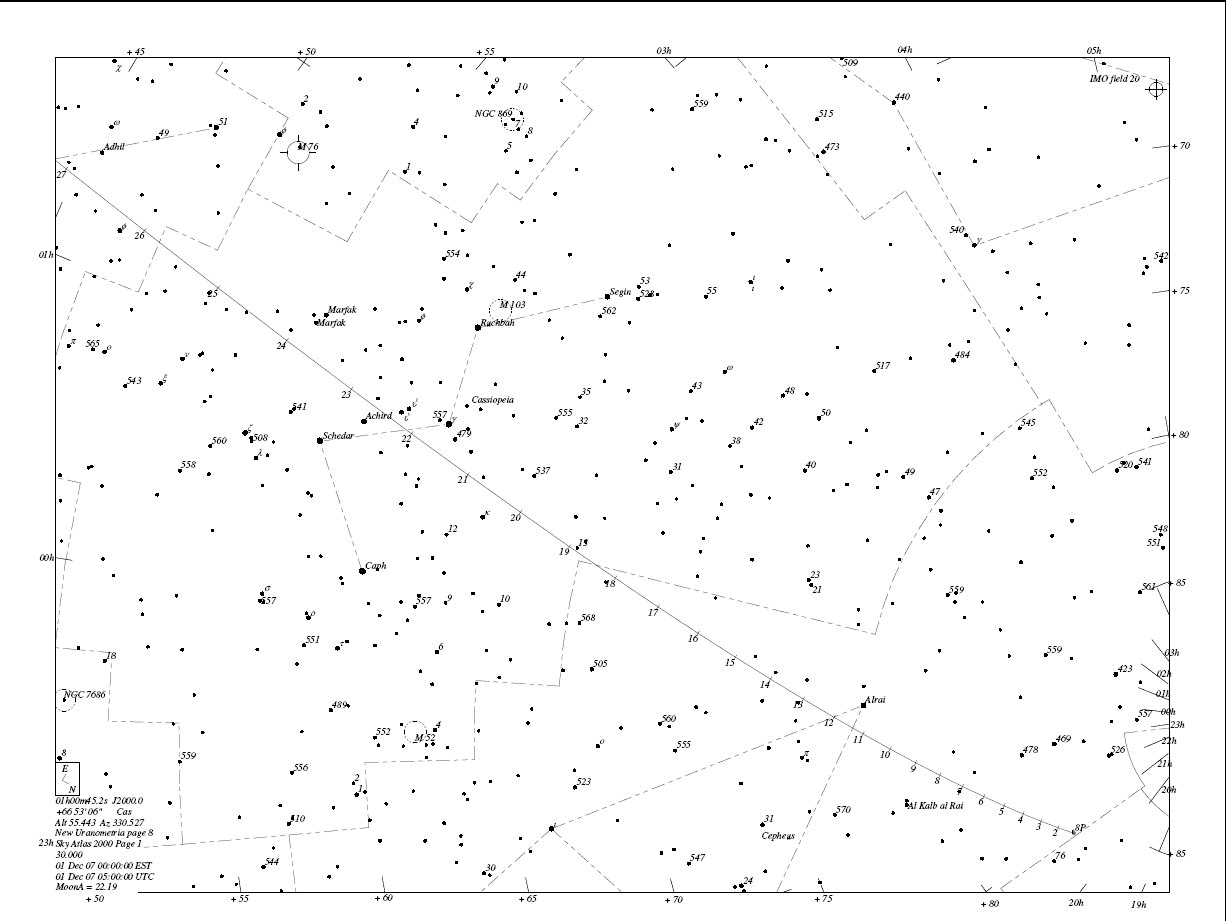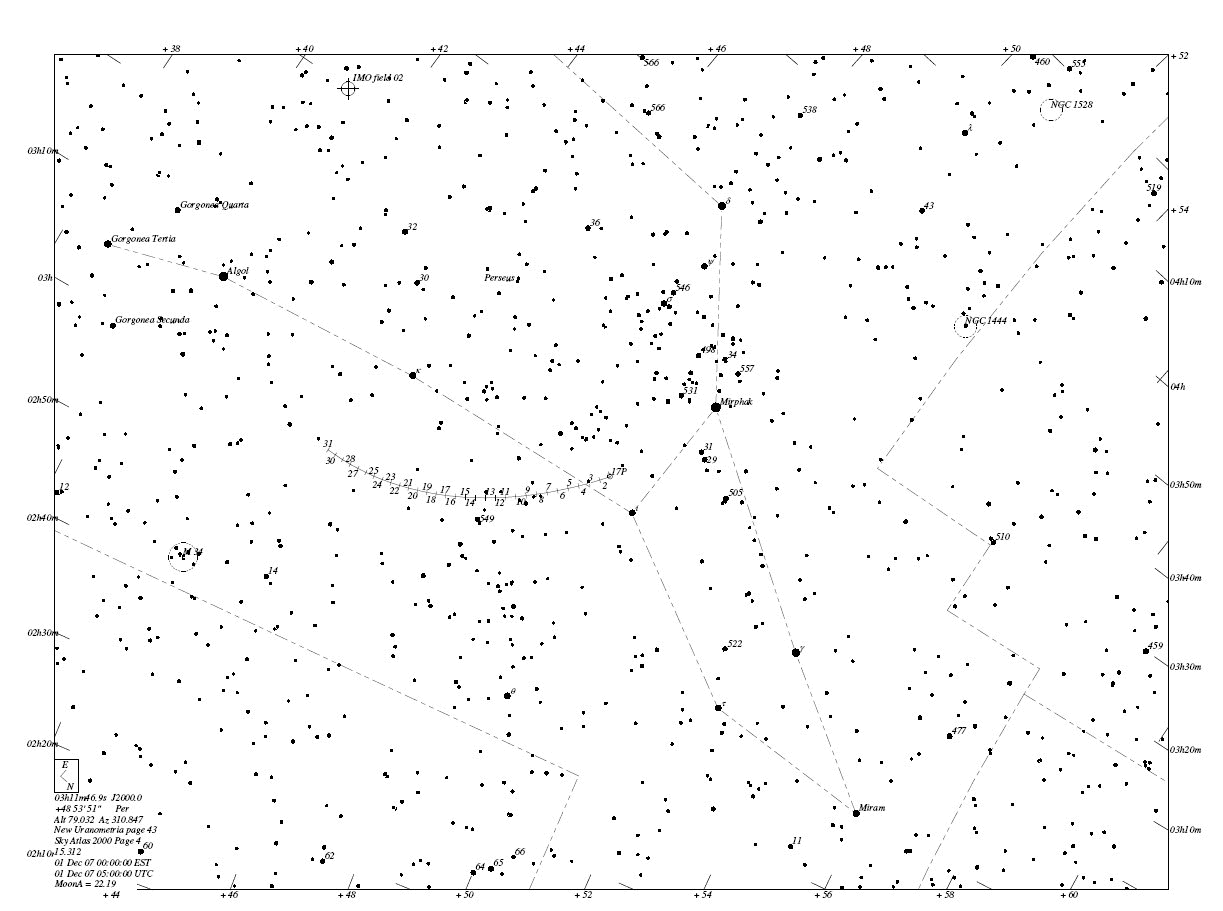

Well anyone who knows me even slightly knows that I have a special place in my heart for comets. And they also know that I’m always happiest when there is a “bright” comet in our skies to observe. I put the word bright in quotes for a reason and that reason is that “bright” simply means bright enough to be seen telescopically.
For me that usually means any comet with an “m1” brighter than 13.1. For those of you unfamiliar with some of the terminology concerning comets I will try to explain as I go and for the rest of you ... hey, just deal with it! “M1” is the total magnitude of the comet including the “nucleus area,” the coma and sometimes if present, the outer shell of the coma. “Coma” is that bright dusty part that surrounds the actual nucleus of the comet. And in these terms the “Nucleus” is the actual comet itself which may only be a few kilometers in diameter. So, the m1 of a particular comet is the magnitude for an area ranging from a couple of arc seconds to a half of a degree or more! The m1 of a comet never includes the tail, and because it can sometimes be difficult determining where the coma stops and where the tail begins. The m1 is always listed as an estimated value, but take heart, the guys who do the estimating are very, very good at it. So, when you see a comet’s magnitude listed as a particular number remember two things;
The second part of this “caveat” is very important to take into consideration; a 13th magnitude comet is not the same as a 13th magnitude star! The brightness is spread out over a much larger (extended) area. Making a comet this bright much more difficult to see than a star of the same brightness. Power (high power), Patience (right conditions), Practice (experience), and Pitch-blackness (high contrast background) are the 4 P’s of comet observing as far as I am concerned. And as far as I am concerned all 4 of these carry equal weight!
But this article is not about me or my observing techniques, this article is about two comets that are quite easily visible in our December night skies. Comet 8P Tuttle and Comet 17P Holmes are currently easy telescopic objects the former getting brighter as it nears it perihelion (closest point in its orbit to the sun), and the latter getting dimmer as it moves further away from us and its perihelion. Both comets are designated with a “P” coming after its number, this simply means that these particular comets are periodic comets or comets whose orbital periods are less than 200 years.
Comet 17P Holmes had a recent catastrophic outburst and brightened from somewhere around 14.5 magnitude to 2.5 magnitude in less than 24 hours! In the very early hours of October 24, 2007 Juan Antonio Henriquez of Santana, Spain reported that the comet was MUCH brighter than expected. Comet observers all over the world quickly confirmed this. Bob King of Minnesota reported its magnitude as 7.1 and then just a few hours later reported that it had increased in magnitude to 4.0! Seiichi Yoshida of Japan gave his observational report shortly after Bob King’s and listed the comet’s m1 to be naked-eye at 3.5 magnitude and by end of his observing session it had brightened further to 2.8 magnitude! I can’t even imagine the excitement these observers must have felt watching a comet get noticeably brighter before their eyes!
Comet 17P Holmes has a bit of a checkered past in that it was probably having a similar outburst when it was first discovered back on November 6, 1892 by E. Holmes. The seeing conditions were not real good and Holmes was actually get ready to “pack it up” for the night, when he decided to take a quick look at M31 thru his 32cm reflector. As he began to move the scope over to the area he noticed what he thought was M31 in the finder scope, but when he looked through the eyepiece he saw something extremely unexpected, a comet with a coma about 5 arc minutes in diameter and a very bright nucleus. Holmes was able to determine a rough position shortly after mid-night and just before the clouds moved in. He immediately contacted the principle at the Royal Observatory at Greenwich, England. They expressed a certain amount of skepticism about this find because of its nearness to M31; however, all doubt was removed the next night when the powers to be were able to see it clearly with the naked eye! Original magnitude estimates put the comet at about 3.5 to 4.0 mag.
Because the comet’s perihelion distance is over 2 AU, the initial orbits were somewhat inconsistent. Before the comet dust settled and an orbit could be agreed upon there were 10 different orbits plotted and at least as many different perihelion dates. The final numbers came in as June 13 (perihelion date) and 6.9 years (orbital period) for this particular time around the Sun. I say this “particular time” around the Sun because this comet’s orbital period varies from time to time. I’ll try to explain, but please take into account that I am not Brian Marsden of the International Astronomical Union. In a nut shell; comet Holmes’ orbit takes out far enough that both Jupiter’s and Saturn’s gravitational forces influence and perturb the orbit of this comet. If these perturbations are not correctly interpreted and applied you lose the comet, as what happen after the 1906 apparition, certain factors were not taken into account and comet Holmes was lost.
It wasn’t until December 1963 when Brian Marsden integrated the motion of the comet from 1899 to 1975 using a high-speed computer, that he was able to determine that these perturbations had increase the orbital period from 6.86 years to 7.35 years and that the perihelion distance increased from 2.121 AU to 2.347 AU. Brian was able to correctly predict comet Holmes’ perihelion date for November 15.36, 1964 and on July 16, 1964 comet Holmes was recovered after 58 years by the U.S. Naval Observatory in Flagstaff, AZ. Magnitude estimates put it at a very dim 19.2 and every return since then the comet has been observed.
As I mentioned earlier the actual size of most comets is very small and comet Holmes is no exception at only 2.5 kilometers in diameter and that coupled with its distance from the Sun tends to make this periodic comet a dim one. Generally not getting much brighter than 14th magnitude... and other than its discovery pass, back in 1892 this has been the case.
Fast forward to the 2007 return of comet 17P Holmes and nothing unusual seemed to be happening thru its perihelion on May 4th and as it made its way back out to the dark corners of the solar system this comet was all but forgotten until its next return in 2014. But all that changed on October 24th when the cataclysmic outburst threw a shockwave through the comet observing community. As of November 30th comet 17P Holmes remains a naked eye object and should continue to be an easy binocular / telescope target through December.

That’s enough for the first comet in this article; remember this is the “Tail of Two Comets.” Comet 8P Tuttle is also visiting the inner solar system now and it well placed for observing in our circumpolar skies thru the month of December and is a respectably bright comet in and of its self. Although comet 8P Tuttle doesn’t have as colorful history as Holmes’ namesake, comet 8P Tuttle does enjoy an illustrious past. It was first observed by P. Mechain of Paris, France on January 9th 1790, it was also observed by Charles Messier and William Herschel over the next few weeks. So why isn’t it called 8P Mechain or Messier or Herschel? Simply because they did not recognize the comet’s short period due to the limited duration of its visibility on that pass.
Horace Parnell Tuttle of the Harvard College Observatory in Cambridge, MA discovered this comet on January 5th 1858 and the first elliptical orbit was computed by James C. Watson of Ann Arbor, MI during late February, when he used three positions obtained between January 5th and February 25th. Watson determined the perihelion date to be February 23.26, 1858 at a distance of 1.026 AU and an orbital period of 13.96 years. The comet’s total magnitude on the 1858 pass may have been slightly bright than 7.0 magnitude.
The 2007-2008 apparition of Comet 8P Tuttle has been predicted to be a very nice one because it will pass within 0.26 AU of the Earth on January 2, 2008 and it could be a naked eye comet from a very dark site. At any rate it will be an easy target for binoculars and telescopes through December and the first part of January. After that the comet moves to the southern hemisphere. However, while it’s visible in our skies it should be bright enough for all to get a good look at it.
Comet 8P Tuttle is the parent comet of the Ursid meteor shower which reaches maximum on December 22. We’ll have to wait until next year to see if this pass has any impact of the normal ZHR of 15 (rather light for meteor showers).
So, as you might have guessed I am a rather “happy camper” right now and as long as the skies clear occasionally over the next month, the smile on my face should be a pleasant and permanent fixture at least for a little while.
